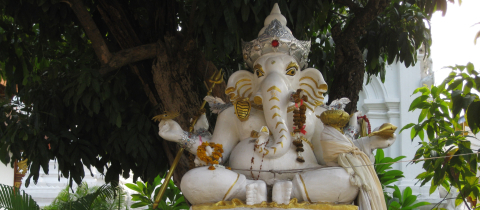Trying to milk the scientific literature for evidence of a link between dairy consumption and breast cancer can drive one crazy. Is milk protective against this dreaded disease or does it cause it? It depends on which study you happen to read. The latest volley in this battle was fired by researchers from Loma Linda University who concluded that even small amounts of milk, as little as a third of a cup a day, can significantly raise the risk of breast cancer.
This was not some haphazard study. It involved following some 53,000 women who were initially free of breast cancer for eight years. Food frequency questionnaires were filled out at the beginning of the study, and a smaller contingent also periodically filled out twenty-four-hour recall questionnaires that seemed to validate that the whole cohort did not make major dietary changes over the trial period. Eventually, 1057 cases of breast cancer were diagnosed, and when the numbers were crunched, the researchers calculated a hazard ratio that ranged from 1.2 to 1.7 depending on the amount of milk consumed.
This means that milk-drinkers were 1.2 to 1.7 times more likely to develop breast cancer over the period of study than non-drinkers. According to cancer statistics, the breast cancer rate in this population is about 3-4% so that with the calculated hazard ratio, roughly 1-2 extra cases of breast cancer would be expected due to drinking a third of a cup to a cup of milk a day. Headlines claiming “50% increase in breast cancer by drinking a third of a cup of milk a day” miss the mark because this is a relative risk, not an absolute risk. In other words, an increase in breast cancer incidence from 3 to 4.5% is a 50% increase, but in absolute terms, it means only 1.5 extra cases per one hundred subjects. This is not a huge increase in risk, but it is not insignificant.
The subjects were all Seventh Day Adventists with a large subset consuming either no dairy or little dairy thereby providing a significant group for comparison with the milk drinkers. Soy products were also frequently consumed in this population and were not associated with breast cancer. Substituting these for milk actually offered protection against the disease. The researchers suggested several possible reasons why milk can increase the risk of breast cancer. Since the lactating cows are usually pregnant, they secrete estrogen and progesterone in the milk and these may play a role in triggering hormone-sensitive cancers. Milk also contains insulin-like growth factor 1, IGF-1, a protein that some studies have implicated as a possible stimulant of cancer cell proliferation.
There is no question that this study was well done. But, and there is always a but, isn’t there? The but here is that just a few keystrokes can bring up other studies that also seem to be equally well done but come to the opposite conclusion. In 2015, Chinese researchers analyzed 22 prospective studies involving over 1.5 million subjects as well as five case-control studies with a total of 33,000 subjects and found that when the results were pooled, high and modest milk consumption significantly reduced the risk of breast cancer compared with low dairy consumption. A possible rationale was a protective effect due to calcium. Then in 2019, another meta-analysis of case-control studies, published in the journal, Medicine, found no association between milk consumption and breast cancer.
So, what do we make of these battling studies? Basically, that nutritional research, even if well carried out, cannot account for all confounders and rarely comes to a conclusion that cannot be debated. This is the case not only for dairy consumption but also when it comes to a risk-benefit evaluation for artificial sweeteners, saturated fats, dietary supplements, processed meats, organic foods and a host of other foods or food components. In this case, the subjects were all Seventh Day Adventists whose lifestyle differs considerably from the general population. Many are vegetarians or vegans and eschew processed foods. Adventists drink no alcohol and obesity is very rare. Since alcohol, obesity and processed foods have all been associated with cancer, it is possible that reducing these risk factors allows smaller ones that are masked in the general population to emerge.
Although no observational study can prove a cause and effect relationship, the recent Loma Linda study does ring some alarm bells because of its size and range of milk consumption and call into question the usual recommendation that consumers should drink three glasses of milk a day. Milk is a good source of calcium but there are other foods or supplements that can provide the mineral. It is also noteworthy that breast cancer rates in Japan have increased significantly with an increase in milk consumption since the Second World War.
It should be remembered that in science no single publication should be taken as having the final word, but the Loma Linda study does suggest that the milk-breast cancer link cannot be dismissed. I suspect members of Dairy Associations around the world are going to be in the market for antiperspirants. And no, these do not cause breast cancer.







